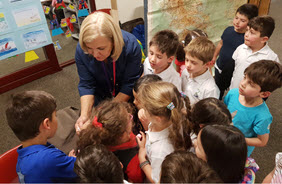Understanding Neurodiversity in the Classroom
Neurodiversity is a term that encompasses the idea that neurological differences should be recognized and respected as a natural part of human diversity. This concept highlights that individuals may have unique brain functions and variations in cognition, learning, and behavior. Embracing neurodiversity means moving away from the idea that there is only one “normal” or “typical” way of thinking and functioning.
From autism and ADHD to dyslexia and Tourette syndrome, neurodiversity acknowledges the wide spectrum of neurological differences that exist among individuals. It emphasizes the importance of understanding and appreciating these differences rather than viewing them as deficits or disorders. By promoting acceptance and inclusion, the neurodiversity paradigm seeks to create an environment where all individuals, regardless of their neurological makeup, can thrive and contribute positively to society.
Recognizing Different Learning Styles
Understanding that individuals have diverse learning styles is crucial for educators to tailor their teaching methods effectively. Some students may excel in visual learning, absorbing information best through diagrams, charts, and videos. Others might gravitate towards auditory learning, preferring to listen to lectures or participate in discussions to comprehend concepts better.
Moreover, kinesthetic learners thrive when they can physically engage with the material, such as through hands-on activities or interactive experiments. Taking into account these various learning styles can enhance the educational experience for all students, allowing them to grasp and retain information more effectively. By acknowledging these differences and adapting instructional strategies accordingly, educators can create a more inclusive and enriching learning environment for neurodiverse students.
• Visual learners prefer diagrams, charts, and videos
• Auditory learners excel in listening to lectures and participating in discussions
• Kinesthetic learners thrive with hands-on activities and interactive experiments
Understanding the different learning styles of students allows educators to tailor their teaching methods effectively. By recognizing these differences and adapting instructional strategies accordingly, a more inclusive and enriching learning environment can be created for all students. This approach not only enhances the educational experience but also helps students grasp and retain information more effectively.
Challenges Faced by Neurodiverse Students
Neurodiverse students often encounter unique challenges in traditional educational settings. One common difficulty is related to sensory sensitivities, such as being overwhelmed by loud noises or bright lights in the classroom. These sensory distractions can make it hard for neurodiverse students to focus on their studies and fully engage in the learning process.
Additionally, neurodiverse students may struggle with organizational skills and time management. Keeping track of assignments, deadlines, and schedules can be especially challenging for those with conditions like ADHD or autism. This can lead to missed deadlines, incomplete work, and feelings of frustration and inadequacy. It’s important for educators and support staff to provide appropriate accommodations and guidance to help these students succeed academically.
What does neurodiversity mean?
Neurodiversity is the concept that neurological differences, such as those found in autism, ADHD, dyslexia, and other conditions, are natural variations in the human population.
How can educators recognize different learning styles in neurodiverse students?
Educators can recognize different learning styles by observing how students respond to various teaching methods, providing options for different ways to demonstrate knowledge, and allowing for flexible learning environments.
What are some of the challenges faced by neurodiverse students?
Some challenges faced by neurodiverse students include difficulties with social interactions, sensory sensitivities, executive functioning deficits, and struggles with organization and time management.
How can schools support neurodiverse students?
Schools can support neurodiverse students by providing accommodations such as extra time on tests, sensory-friendly spaces, social skills training, and access to assistive technology. Additionally, promoting a culture of acceptance and understanding can help create a more inclusive environment for all students.







